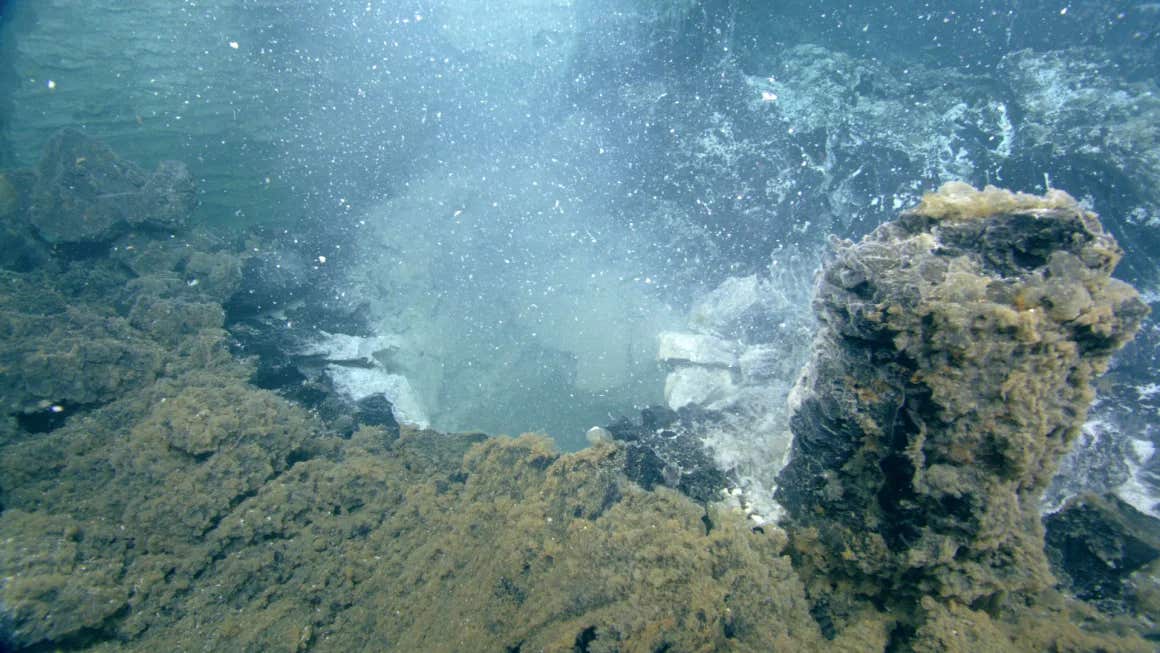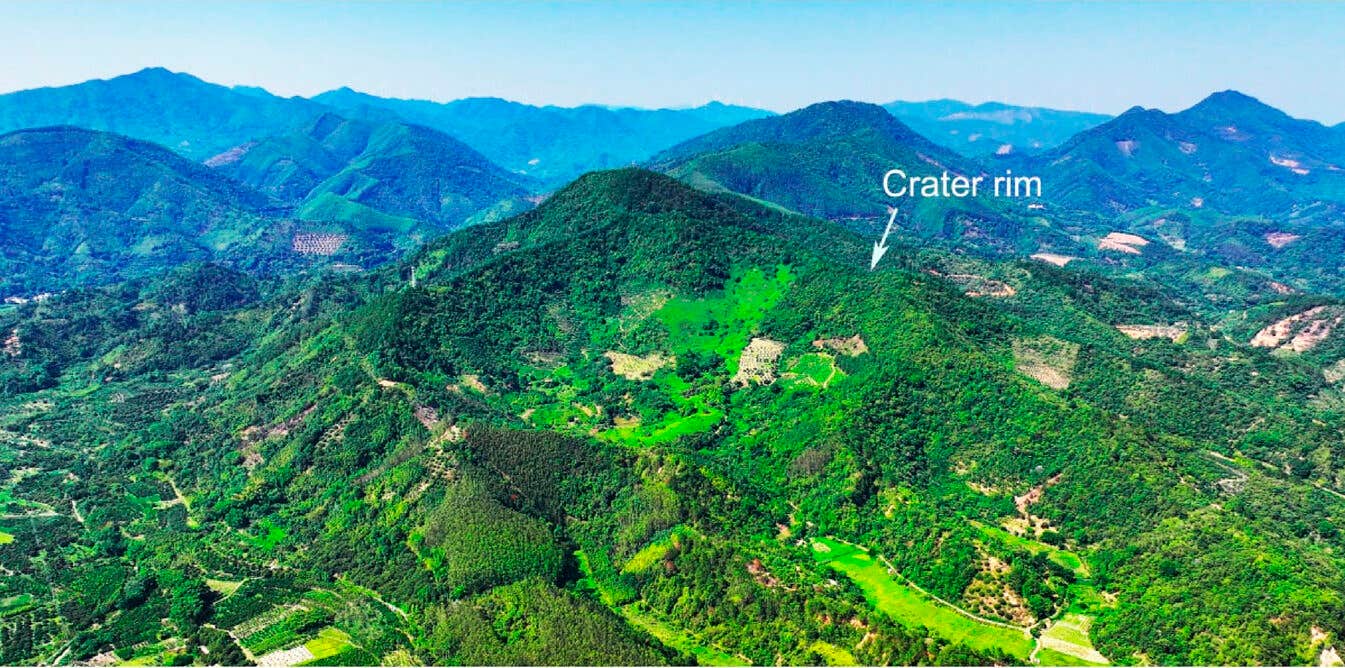Massive underwater volcano off the coast of Oregon is getting ready to erupt
Deep beneath the waves of the Pacific Ocean, nearly a mile underwater, one of the most fascinating volcanoes in the world is preparing to erupt.

Axial Seamount, an underwater volcano off Oregon’s coast, is ready to erupt. (CREDIT: UW/NSF-OOI/CSSF-ROPOS)
Deep beneath the waves of the Pacific Ocean, nearly a mile underwater, one of the most fascinating volcanoes in the world is preparing to erupt. Axial Seamount, located roughly 300 miles off the coast of Oregon, is not a typical volcano. It rises from an underwater geological hotspot, where heat from Earth's mantle pushes molten rock toward the surface, forming a towering structure nearly 3,600 feet high.
But what sets Axial apart from similar underwater mountains is its position atop the Juan de Fuca Ridge. Here, two enormous tectonic plates—the Pacific and the Juan de Fuca—slowly spread apart. This constant movement builds pressure deep beneath the ocean floor, fueling regular volcanic activity and making Axial one of the ocean’s most closely studied volcanic sites.
Monitoring Earth's Underwater Heartbeat
Scientists from the University of Washington closely track Axial Seamount through an advanced network of underwater sensors called the Regional Cabled Array. This system delivers real-time data on seismic activity, temperature changes, and even live video streams from the volcano’s surface.
Marine geophysicist William Wilcock, who studies Axial’s behavior, notes that the volcano typically gives clear signals before an eruption. As magma pushes upward, small earthquakes multiply around the seamount. Right now, about 200 to 300 tremors occur each day—significantly fewer than the thousands expected before an eruption. However, Wilcock warns the situation can change rapidly.
"I would say it was going to erupt sometime later this year or early 2026," Wilcock said. "But it could be tomorrow because it’s completely unpredictable."
When Lava Meets Ocean
When Axial Seamount erupted last in April 2015, scientists watched closely as about 10,000 small earthquakes signaled the start. The eruption lasted around a month, spilling lava across 25 miles of ocean floor. Each eruption reshapes the seafloor dramatically, often collapsing sections of the volcano's magma chamber and forming a crater known as a caldera.
Related Stories
Debbie Kelley, who directs the monitoring program, describes eruptions at Axial as mild compared to land-based volcanoes. "You won’t see ash clouds above water or anything dramatic," she said. "It’s like if you put a mile of seawater on top of Kilauea volcano."
Instead, lava quietly oozes from cracks in the seafloor, rapidly cooling into new rock formations. Still, deep-water eruptions produce distinctive sounds scientists detect with underwater microphones.
"When seawater gets trapped beneath a lava flow, it heats up, turns to steam, and eventually bursts," Wilcock explained. "That creates loud implosions we hear clearly."
Life Thrives Amid Chaos
Surprisingly, Axial’s violent transformations create some of Earth's richest deep-sea habitats. Its underwater hot springs, known as hydrothermal vents, spout water heated by magma beneath the surface. These vents support vast communities of microbes, giant tubeworms, spider crabs, and even octopuses.
“Life thrives in these inhospitable environments, and volcanoes are probably one of the major sources of life in our oceans,” Kelley said. Each eruption temporarily destroys these unique communities, yet remarkably, life returns within months, stronger and more diverse than ever.
Researchers recently saw evidence of how quickly ecosystems recover during an expedition near Costa Rica. Scientists from Woods Hole Oceanographic Institution accidentally witnessed an active eruption while exploring deep-sea vents. The eruption charred marine life, but researchers expect recovery within months, similar to past observations at Axial.
Earth, Moon, and Volcano
One unexpected discovery at Axial Seamount involves a mysterious connection between volcanic activity and celestial bodies. Every eruption recorded so far—in 1998, 2011, and 2015—occurred between January and April, as Earth moves farther from the sun.
Marine geophysicist Maya Tolstoy from UW College of the Environment notes this might be linked to gravitational effects from the moon. As the moon's gravity causes tides to rise and fall, it also changes pressures on the seafloor, potentially triggering eruptions at critical times.
“At high tide, ocean weight presses down on the crust, and during low tide, earthquake activity increases,” Tolstoy explained. "We are curious if these tidal patterns influence eruptions by adding extra stress to magma chambers."
Researchers eagerly await Axial’s next eruption to test these theories. Each volcanic event helps scientists better understand Earth's geological processes and the extreme habitats that surround these underwater mountains.
Watching a Volcano Live
The upcoming eruption promises a front-row seat like never before. The University of Washington's observatory plans to livestream the event worldwide—an unprecedented scientific broadcast.
"Three-quarters of Earth's volcanic activity happens at mid-ocean ridges," Kelley said. "Yet, we've never directly observed these eruptions in real-time."
Axial’s eruption poses no danger to coastal residents or marine animals like whales or salmon. The event won't trigger earthquakes or tsunamis onshore. Instead, the eruption offers scientists a unique opportunity to learn more about deep-sea geology and biology.
"Every eruption gives us something new," Wilcock emphasized. "We might finally understand how predictable these underwater events really are."
The upcoming eruption at Axial Seamount represents more than a scientific curiosity—it’s a rare chance to witness Earth's underwater power shaping our planet in real-time. As data floods in, scientists around the globe eagerly anticipate new insights from beneath the Pacific’s mysterious depths.
Note: The article above provided above by The Brighter Side of News.
Like these kind of feel good stories? Get The Brighter Side of News' newsletter.



